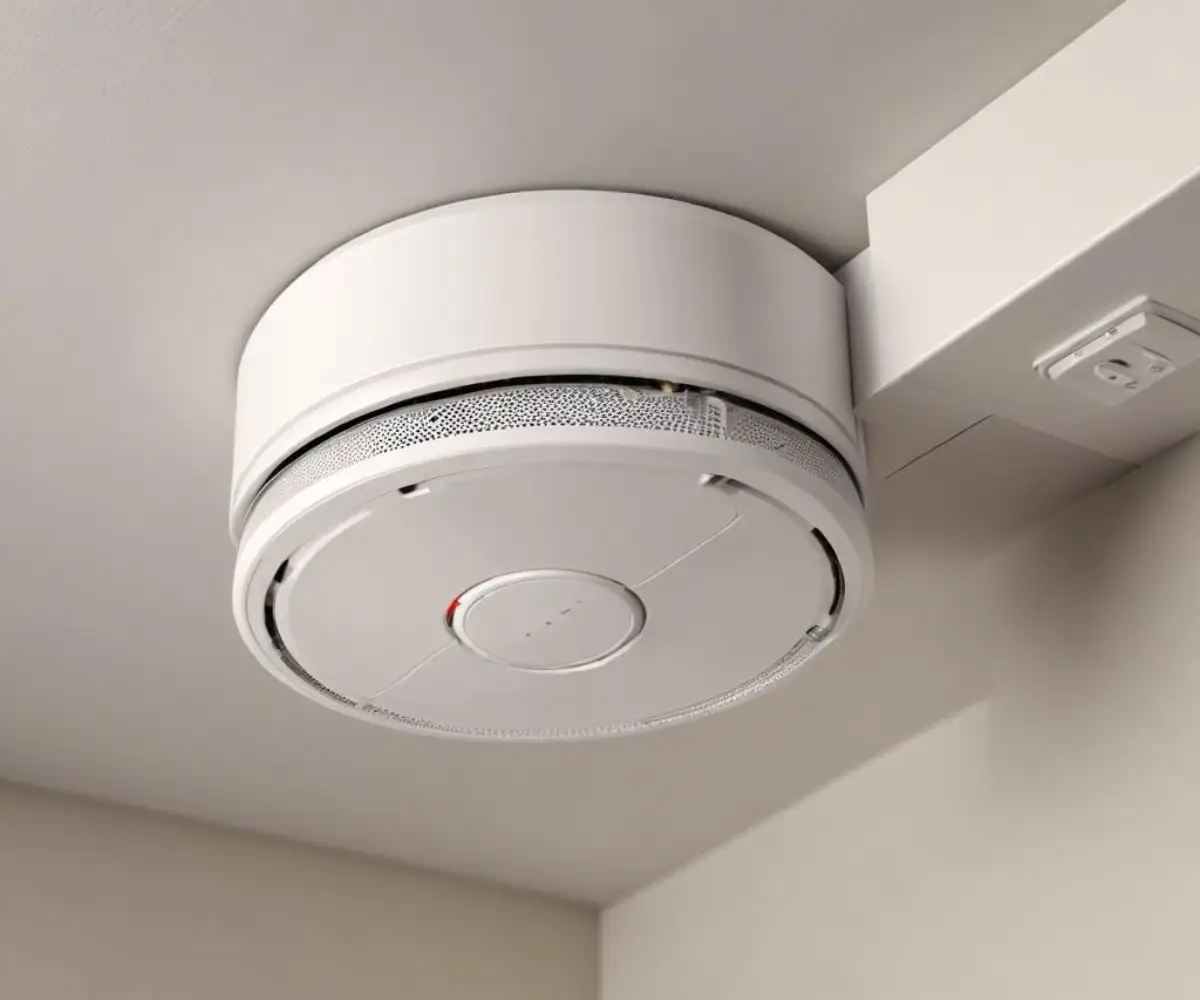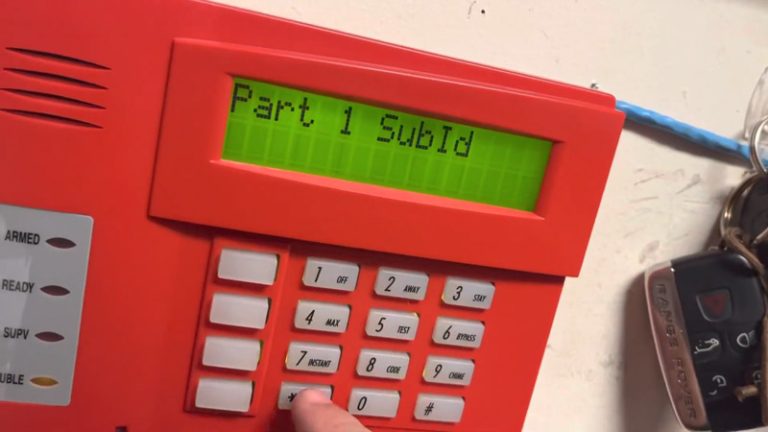Smoke Alarm Battery Drawer Stuck? Here’s Your Ultimate Fix
That incessant chirping from your smoke detector is more than just an annoyance; it’s a critical alert. But when you try to fix it and the smoke alarm battery drawer is stuck, frustration quickly turns to concern. A non-functional smoke alarm is a major safety risk, so resolving this issue is paramount.
Fortunately, a stuck battery drawer is a common problem with several straightforward solutions. This guide will walk you through why this happens, how to safely get it open, and what to do to prevent it from happening again, ensuring your home’s first line of defense against fire is always ready.
You'll Learn About
Why Is My Smoke Detector’s Battery Drawer Jammed?
Understanding the root cause of a stuck battery drawer is the first step toward fixing it. The issue usually boils down to a few common culprits, ranging from battery problems to the physical condition of the alarm itself.
Most often, the problem lies with the batteries themselves. Over time, batteries can swell, leak, and corrode, effectively “gluing” the drawer shut with chemical residue. In other cases, the plastic of the drawer or the alarm’s housing may have warped, or a small piece of debris could be blocking the mechanism.
The Most Common Culprits Explained
Swollen Batteries: When batteries, especially older alkaline types, discharge, they can produce hydrogen gas. This gas buildup causes the battery’s casing to swell, making it too large to easily slide out of its compartment. This is one of the most frequent reasons for a jammed drawer.
Battery Corrosion: A white, crusty substance around the battery terminals is a clear sign of corrosion. This leakage is potassium hydroxide, which can fuse the battery to the plastic drawer and metal contacts, making removal extremely difficult.
Physical Obstruction or Damage: Sometimes the cause is as simple as a small piece of plastic breaking off and lodging in the sliding mechanism. The drawer itself or the surrounding housing could also be warped due to age, heat, or humidity, preventing smooth operation.
Tamper-Resistant Features: Some smoke alarms, particularly in rental properties, have a locking pin to prevent tenants from removing the batteries. If you’re unaware of this feature, it can feel like the drawer is simply stuck.
Safety First: Your Pre-Fix Checklist
Before you attempt to unstick the battery drawer, taking a few safety precautions is essential. This protects both you and the smoke alarm from unnecessary damage.
First, if your smoke alarm is hardwired to your home’s electrical system, you must turn off the power at the circuit breaker. This eliminates the risk of electric shock. Work in a well-lit area, using a flashlight or headlamp if necessary, to get a clear view of what you’re doing.
Gather Your Tools
Having the right tools on hand will make the job much easier and safer. You will likely need:
- Needle-nose pliers: For gripping batteries and removing debris.
- Small flathead screwdriver or plastic pry tool: To gently create leverage.
- Protective gloves and eyewear: Crucial if you suspect battery corrosion.
- Compressed air: To blow out dust and small obstructions.
Step-by-Step Guide to Opening a Stuck Battery Drawer
Approach this problem with patience, starting with the gentlest method first. Forcing the drawer can cause permanent damage, requiring a full replacement of the unit. Try these techniques in order.
Method 1: The Gentle Wiggle
Often, simple pressure is all that’s needed. Try pressing firmly on the drawer door while simultaneously wiggling it gently from side to side. This can be enough to dislodge a drawer that is only slightly misaligned or has a minor obstruction.
If this doesn’t work, use a thin, non-marring tool like a plastic pry tool or a credit card to gently pry around the edges of the drawer. The goal is to create a small gap and break any seal caused by dust or humidity.
Method 2: Addressing Swollen or Corroded Batteries
If you see evidence of a swollen or leaking battery, this is likely your culprit. Put on your gloves and safety glasses before proceeding. Battery acid is caustic and can cause skin irritation or eye damage.
Use needle-nose pliers to get a firm grip on the end of the battery. Pull steadily and gently, wiggling it back and forth to break it free from any corrosive buildup. Avoid puncturing the battery, as this can release more chemicals.

Method 3: Defeating the Latch and Locking Pins
Inspect the area around the drawer for a small hole or a colored pin. Some models, like certain First Alert alarms, use a locking pin that must be removed with a screwdriver or pliers before the drawer can open. If you see such a pin, gently pry it out.
Other models have a small plastic latch that must be depressed to release the drawer. Use a small screwdriver to press this latch while simultaneously pulling the drawer open.
My Drawer is Open! Now What? (Cleaning and Prevention)
Once you’ve successfully opened the drawer and removed the old batteries, your job isn’t done. Proper cleaning and maintenance are key to preventing the problem from recurring.
If there was corrosion, you must neutralize and clean the residue thoroughly. Use a cotton swab dipped in a small amount of white vinegar or lemon juice to dissolve the alkaline crystals. After the fizzing stops, clean the area with a separate swab and a bit of isopropyl alcohol to remove any remaining moisture and residue.
Create a Maintenance Routine
Regular maintenance is the best way to ensure your smoke alarm is always in working order. A simple schedule can save you from future headaches and, more importantly, keep your home safe. Use the following table as a guide for your smoke detector care.
| Frequency | Maintenance Task | Purpose |
|---|---|---|
| Monthly | Test the Alarm | Press the test button to ensure the siren and internal electronics are working. |
| Every 6 Months | Replace Batteries | Change the batteries with new, high-quality ones to prevent low-battery chirps and reduce the risk of leaks. |
| Every 6 Months | Clean the Unit | Use a vacuum with a soft brush attachment or compressed air to clean dust from the vents and sensor chamber. |
| Annually | Inspect the Unit | Check for physical damage, warping, or discoloration. Ensure the battery drawer slides smoothly. |
| Every 10 Years | Replace the Entire Unit | Smoke alarms have a limited lifespan. Replace the entire device according to the manufacturer’s date. |
When to Give Up and Replace Your Smoke Alarm
Sometimes, a stuck drawer is a sign of a much larger problem. All smoke detectors have an expiration date, typically 8-10 years from the date of manufacture. If your unit is approaching this age, or if the plastic is yellowed, brittle, or cracked, it’s time for a replacement.
Fighting with a damaged or expired unit is not worth the risk. A new smoke alarm is an inexpensive investment in your safety. When shopping for a new one, consider a modern unit like a smoke alarm that is not affected by humidity, as these are often built with higher quality materials that are less prone to warping and other physical failures.
Understanding Different Alarm Signals
Knowing what your alarm is trying to tell you can prevent unnecessary panic. While a stuck drawer is a mechanical issue, strange beeps can indicate other problems. For instance, sometimes a device may issue a single, loud blast for a reason other than smoke; it’s wise to know what to do if your fire alarm made one loud beep to correctly diagnose the situation.
Similarly, a pattern of beeps can be a specific error code from the manufacturer. Understanding what a signal like 3 beeps then silence means can help you troubleshoot an issue that isn’t related to the battery at all.
Your Action Plan for a Functional Smoke Alarm
Dealing with a stuck smoke alarm battery drawer can be a test of patience, but it’s a solvable problem. By working carefully from the gentlest methods to more direct interventions, you can safely resolve the issue. Remember that safety is the priority—always handle potentially leaking batteries with care and turn off power to hardwired units before working on them.
Most importantly, see this as an opportunity to implement a regular maintenance schedule. A few minutes of testing and cleaning each month can prevent frustrating problems and ensure your smoke alarm performs its life-saving duty without fail. A working smoke detector is a silent guardian, and keeping it in perfect condition is one of the most important things you can do for the safety of your home and family.

